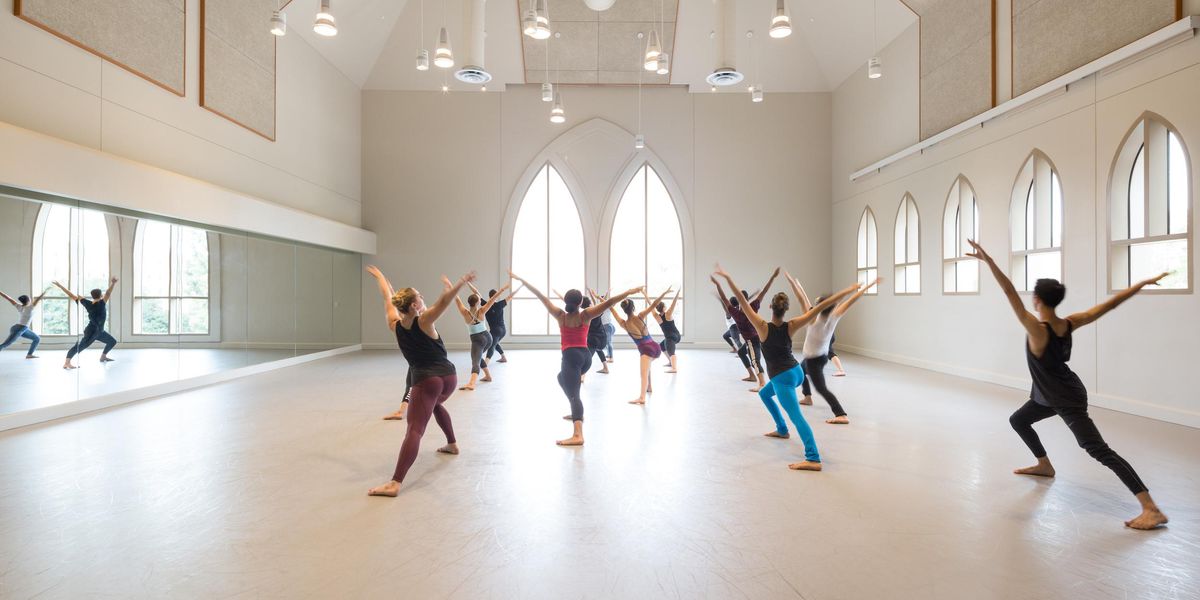Beyond the Footlights
JUNTOS dancers performing for young students in Nicaragua. Photo by Joanna Poz-Molesky, Courtesy Poz-Molesky.
In 2010, then-college senior Joanna Poz-Molesky took the stage in a packed theater in Guatemala. It was a momentous occasion. A decade earlier, she had been sitting in the very same theater watching a performance when she became interested in combining outreach and dance.
Poz-Molesky went on to found her group, JUNTOS, as a sophomore in The Ailey School’s Fordham University BFA program, at a time when she says she was trying to find her artistic identity. “Performance is wonderful, but understanding why you dance is important,” says Poz-Molesky, who has been running the group for seven years. “I think a lot of students are interested in exploring something different. They’re interested in how they might be able to grow as a human and artist.”
For Poz-Molesky and others, the answer is community outreach. Even as students, dancers can make a difference in the lives of others, while discovering new ways to look at the world and their art form. And though running or participating in an outreach group is a big undertaking, the efforts reap plentiful rewards for those on both sides of the exchange.
Outreach of any scale can be daunting for young dancers, but age doesn’t determine its potential impact. Mercedes Forster was just a freshman at Canyon Crest Academy, a San Diego high school with a strong arts program, when she started her mission to share dance with underserved students at a local elementary school. “There was a maturity that she already possessed as a freshman that was pretty special,” says CCA dance coordinator Rayna Stohl.
Still, putting the program’s logistics into motion was no easy task. Forster initially drew club participants from her pool of friends, but struggled to find faculty chaperones that could spare enough time to accompany her club on its monthly visits to Pioneer Elementary School. “I just asked absolutely everyone,” says Forster. “When they said no, I’d explain the situation again.” Less than a year after Forster proposed her Arts Outreach club, the group began teaching simple hip-hop and modern dance classes to Pioneer’s entire 120-member second grade class. “We wanted to teach something that didn’t take a lot of training,” Forster says. “Something they could do at home with the radio.”
Poz-Molesky ran into troubles, too. The biggest was fundraising. Initially, participants had to meet a minimum fundraising threshold; they now fundraise and pay the cost of a trip and JUNTOS raises money to cover remaining fees for the company through individual donations. Even once she got all the finances in order, other problems cropped up. During that initial trip in 2010, there was an outbreak of swine flu in Mexico that made Poz-Molesky reconsider the scale of her ambitions. “There have been moments when I’ve thought, This is a lot,” she says. “But I just didn’t give up.” That trip led JUNTOS to four Latin American cities in two weeks. For the first five days, its dancers took classes and workshops with dance companies and choreographers in Mexico City. The rest of the trip was dedicated to performances and workshops in low-income communities, including an orphanage and a foster home.
The persistence of these young dancers was the key to both projects’ successes. Forster’s club flourished throughout her four years at CCA and is still running today, led by another dancer who is considering expanding its reach to other elementary schools. And what was supposed to be JUNTOS’ one-time trip to Mexico snowballed into an outreach collective that now includes dancers from five colleges, including SUNY Purchase, The Juilliard School, The Boston Conservatory and the Dominican/LINES BFA program. Members teach, perform and lead workshops to a range of ages in schools, orphanages and detention centers in four countries abroad and their own U.S. cities.
Today, Poz-Molesky can look back at the positive impact her program has had. For the community participants, “it is an opportunity for these students to explore their bodies, and push themselves beyond what they thought they could,” she says. “These kids come from all different backgrounds, most from at-risk homes. It’s great to see them enjoy a moment where they can express themselves.”
And the influence she’s seen the work have on JUNTOS’ members is equally meaningful. “The dance students come back with a new approach to dance. Their improved understanding of self influences their movement.
Meanwhile, Poz-Molesky has found some answers to the questions that first compelled her to create the organization years ago. “Working with JUNTOS reminds me how much of an impact we can have as humans,” she says. “We can all do something to create positive change, and it is with our own languages that we do so. My language happens to be dance.”




